April 26, 2021
What We Learned from the Magic Valley Origin-Destination Study
Winding through Wyoming, Idaho, and parts of Oregon and Washington, the Snake River is the largest North American river that empties into the Pacific Ocean. From a transportation perspective, it is also a huge topographic barrier, dividing the Magic Valley in half from east to west. In Twin Falls, Idaho, drivers experience heavy congestion when they cross US 93 over the Snake River via the Perrine Bridge.
In need of a solution to address this congestion, Idaho Transportation Department (ITD) brought in Kittelson to complete an origin-destination study, laying the groundwork for what could become a significant infrastructure project. The purpose of this study was to understand regional travel patterns in the Magic Valley and evaluate the effects of potential new Snake River crossing options.
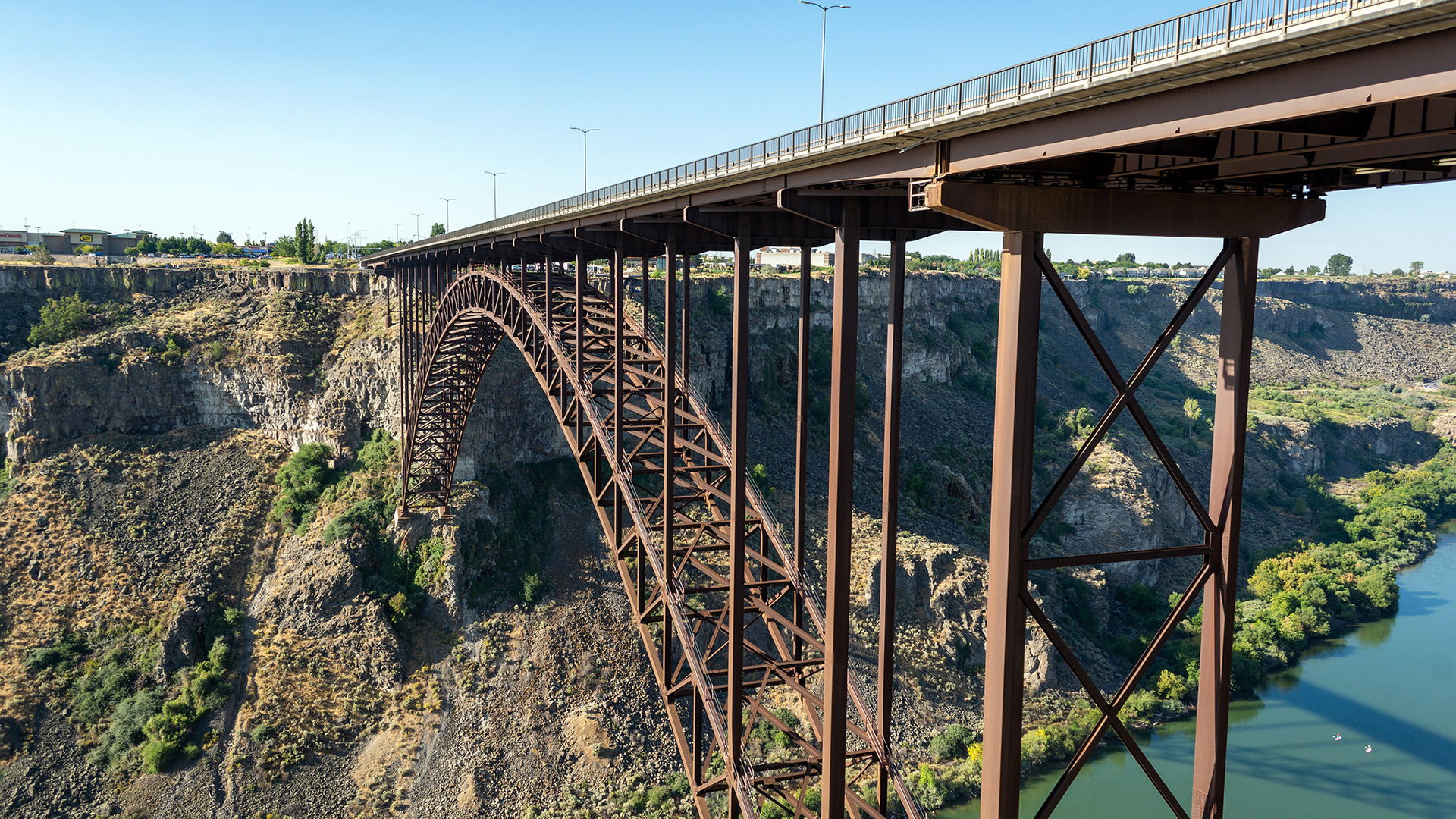
Photo by Matthew Dillon on Flickr.
The Perrine Bridge in Twin Falls, Idaho
At 1,500 feet long and 490 feet high, the Perrine Bridge is the 8th highest bridge in the USA. It is also the only human-made structure in the US where base jumping is allowed without a permit.
The Perrine Bridge is one of three existing river crossings that serve the Twin Falls region (the other crossings are Idaho Highway 50 and Idaho Highway 46). It crosses the Snake River and provides access into an area with the highest concentration of commercial uses in South Central Idaho. Because of these constraints, widening this segment of US 93 is not a practical option, so ITD embarked on a search for a fourth river crossing to ease the congestion leading up to the bridge and improve connectivity between communities in the Magic Valley.
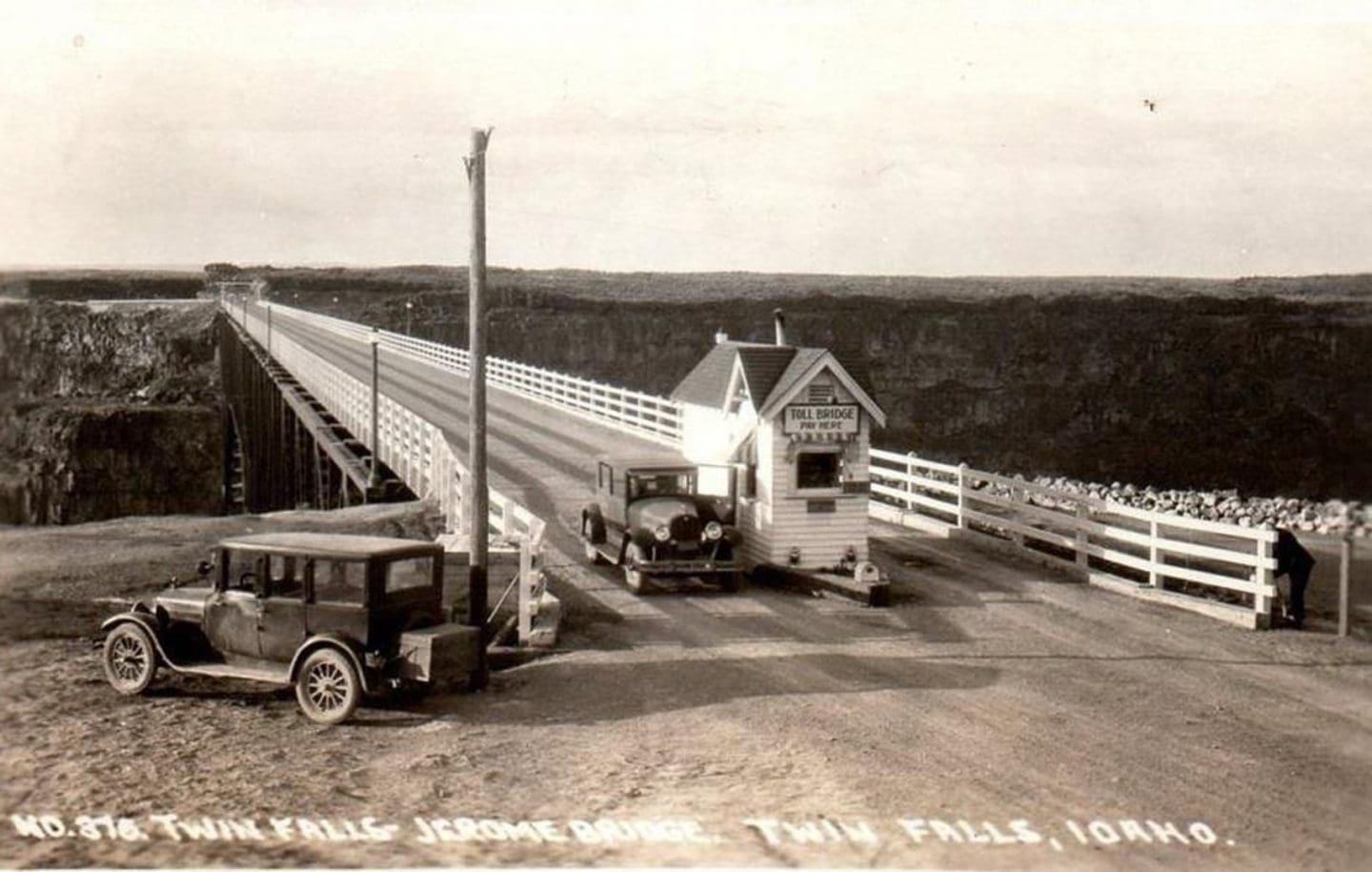
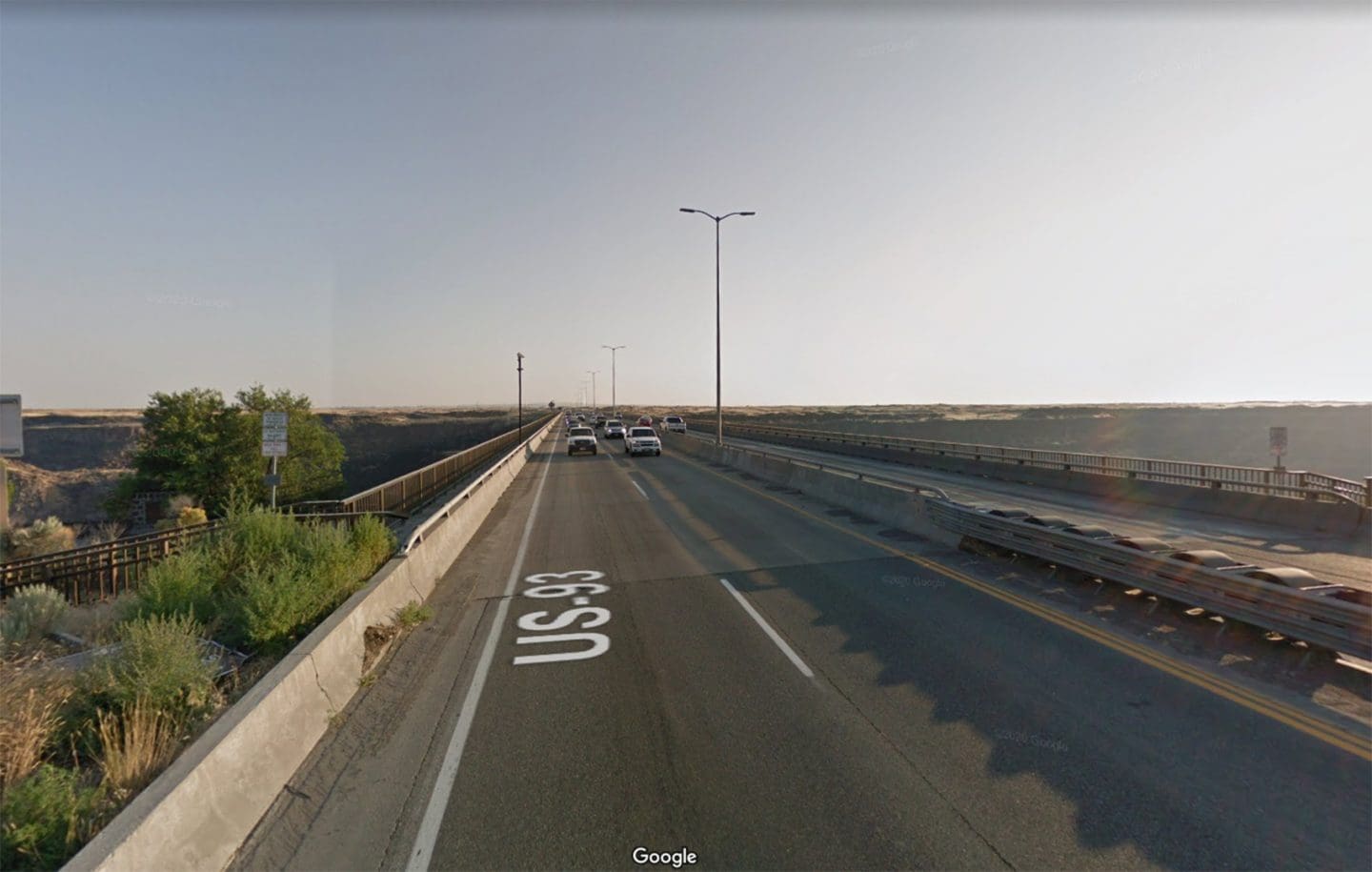
From 1970 to Today
As part of the origin-destination study, we dove into the transportation history of the Magic Valley and learned about a river crossing study that was completed in 1970 when Twin Falls had a population of 20,000 people. (It was validating to see that this study looked at some of the same crossing options that we are studying today!) The 1970 origin-destination study, which ultimately resulted in the construction of the Perrine Bridge and widening to four lanes, showed the primary travel was commuter pattern between Twin Falls and Jerome, which we still see today. And as you can see, it turns out bridges were a bargain in 1970!

Using Data to Guide the Investment: Five Considerations of our Origin-Destination Study
Building a bridge is no small feat (or cost), so it has been essential that we use data and examine this project from multiple perspectives to lead to a good investment. In addition to reviewing the history of the area, here are five steps we took as part of a data-driven origin-destination study that will move this project forward.
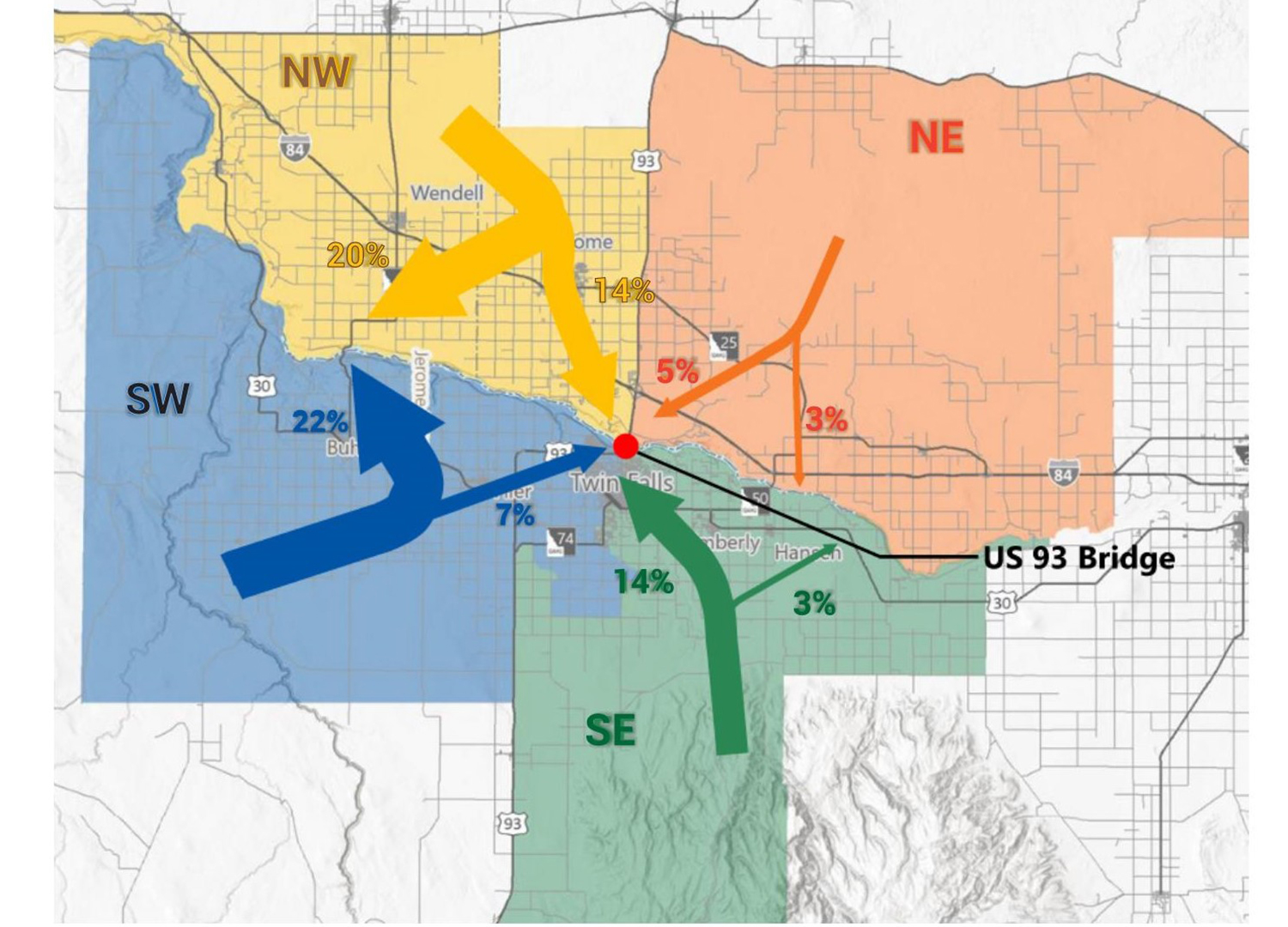 1. Mined past traffic studies to get an idea of the performance of the intersections and roadway segments in the region. As expected, 2040 forecast volumes projected that the Perrine Bridge would continue to act as a choke point for traffic in the region, with heavy congestion on US 93 south of the bridge.
1. Mined past traffic studies to get an idea of the performance of the intersections and roadway segments in the region. As expected, 2040 forecast volumes projected that the Perrine Bridge would continue to act as a choke point for traffic in the region, with heavy congestion on US 93 south of the bridge.
2. Used ITD’s statewide travel demand model to understand the interaction between land use and how people travel around the system. Travel demand models help us understand how travel demands shift with changes in land use and transportation investments. They also provide a tool with which we can model and compare different river crossing alignments.
3. Used Streetlight, a data vendor that provides anonymized data to help us understand traffic patterns. A bridge is a major change to a transportation network with the potential to shift regional travel patterns, so it was critical to understand where people are coming from and where they are going. Streetlight’s origin-destination data gave us insight into existing conditions, showing that dominant travel came from the west side of the Perrine Bridge.
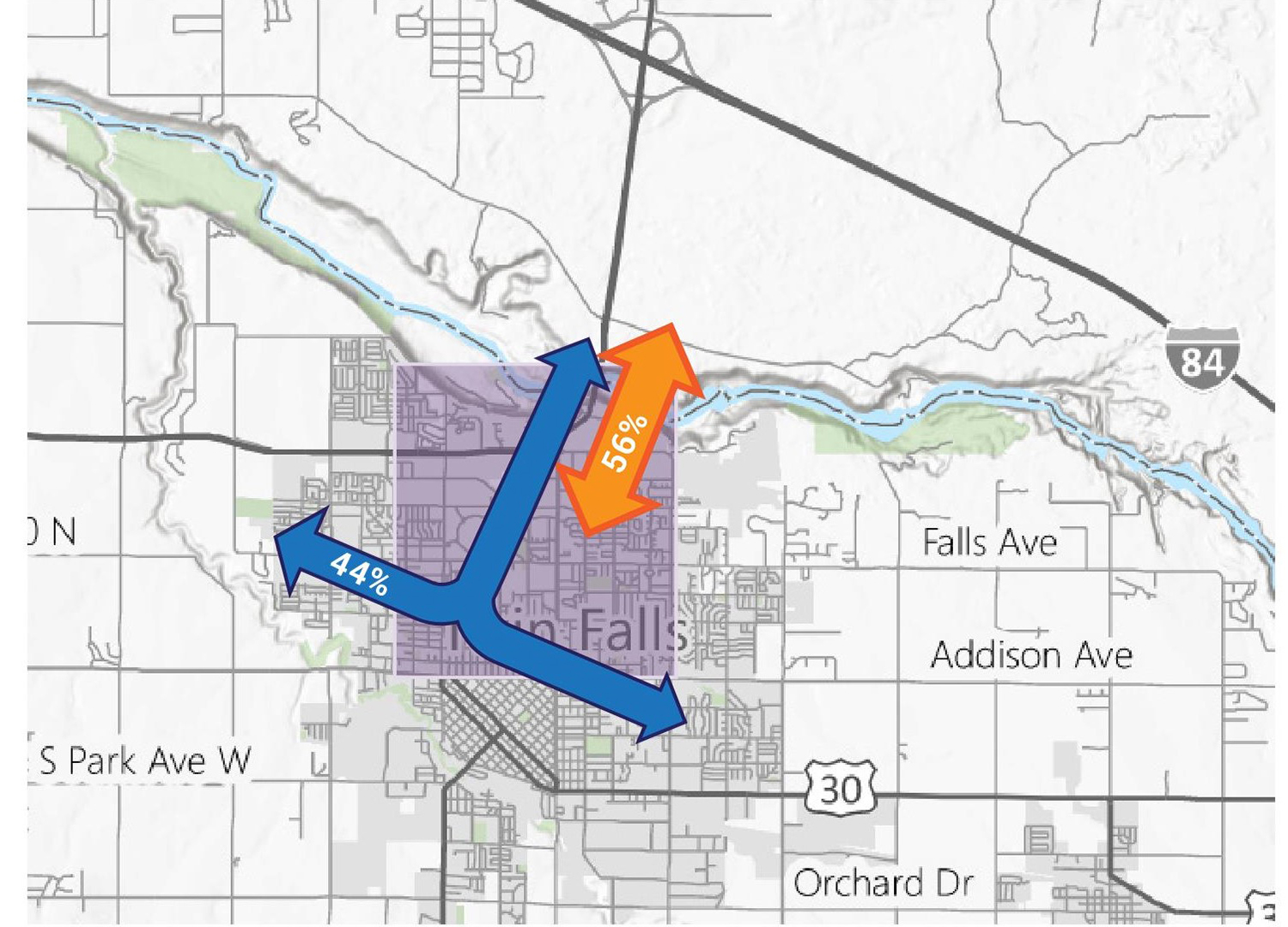 4. Looked at capacity to shift away from the bridge. If you build it, they will come”¦ or will they? We examined how many drivers would be likely to utilize a different facility. Based on the number of trips starting and ending in the commercial area at the base of the Perrine Bridge, we calculated that 56% of trips are unlikely to shift patterns with a new crossing-it simply wouldn’t be logical.
4. Looked at capacity to shift away from the bridge. If you build it, they will come”¦ or will they? We examined how many drivers would be likely to utilize a different facility. Based on the number of trips starting and ending in the commercial area at the base of the Perrine Bridge, we calculated that 56% of trips are unlikely to shift patterns with a new crossing-it simply wouldn’t be logical.
5. Looked at freight patterns. Streetlight provides data specific to freight. We saw that truck drivers use facilities in a way that’s different from the general public, with 35% of traffic from western Idaho bypassing US 93 and entering south east Twin Falls from a different direction.
The Hundred Million Dollar Question: Where Do You Put the Bridge?
ITD is in the early stages of this project. Given the size of the investment (it is not uncommon for projects of this scope to take 10-20 years), our origin-destination study alone did not result in a crossing recommendation, but the findings equipped us to perform a proactive evaluation of potential options.
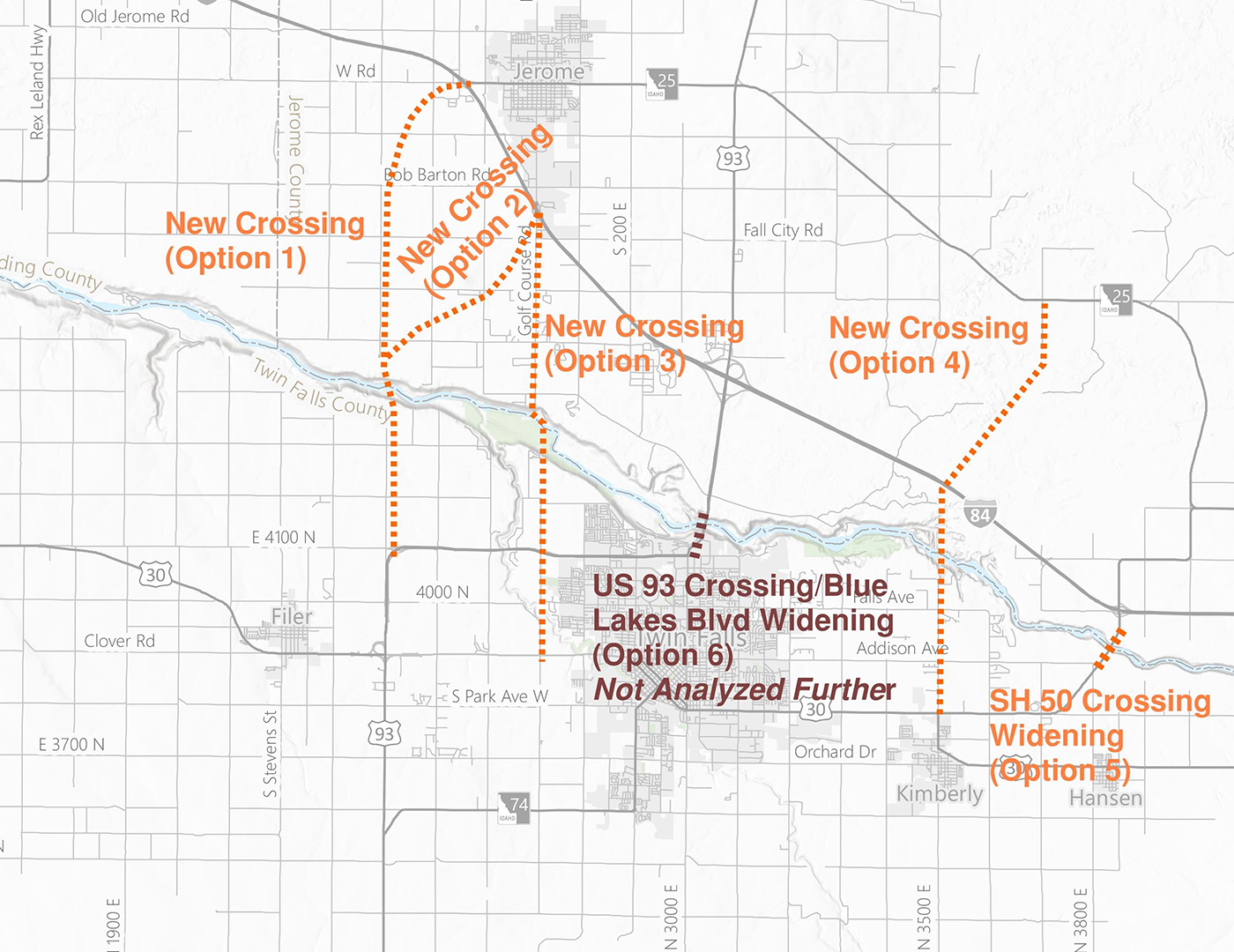 We considered six crossing strategies in total but evaluated five, as the sixth option was not practical due to constraints with widening US 93. Given the scope of the study, we prioritized travel patterns (addressing the demand on the west side of the Magic Valley and connectivity for freight), traffic operations (reducing congestion on US 93 south of the Perrine bridge), and safety performance, asking questions such as:
We considered six crossing strategies in total but evaluated five, as the sixth option was not practical due to constraints with widening US 93. Given the scope of the study, we prioritized travel patterns (addressing the demand on the west side of the Magic Valley and connectivity for freight), traffic operations (reducing congestion on US 93 south of the Perrine bridge), and safety performance, asking questions such as:
- What are the intersections or roadways that will see increased or decreased traffic volumes?
- What traffic volumes would we expect at the new crossing and how would that change volumes at other crossings?
- What is the expected change in travel time along key corridors in the region?
- What would be the other infrastructure impacts?
- How would freight utilize the crossing?
Ultimately, different crossings accomplish different goals. These early evaluations can be used to help inform future decisions. This region is projected to have a population of over 50,000 with the completion of the 2020 US Census, which will lead to the formation of a Metropolitan Planning Organization (MPO). These types of studies provide the future MPO with a foundation to discuss, assess, and prioritize whether this type of investment should be implemented in the future for the region.
This is an exciting project, and we look forward to continuing to support ITD in next steps. Reach out if you’d like to talk further!
